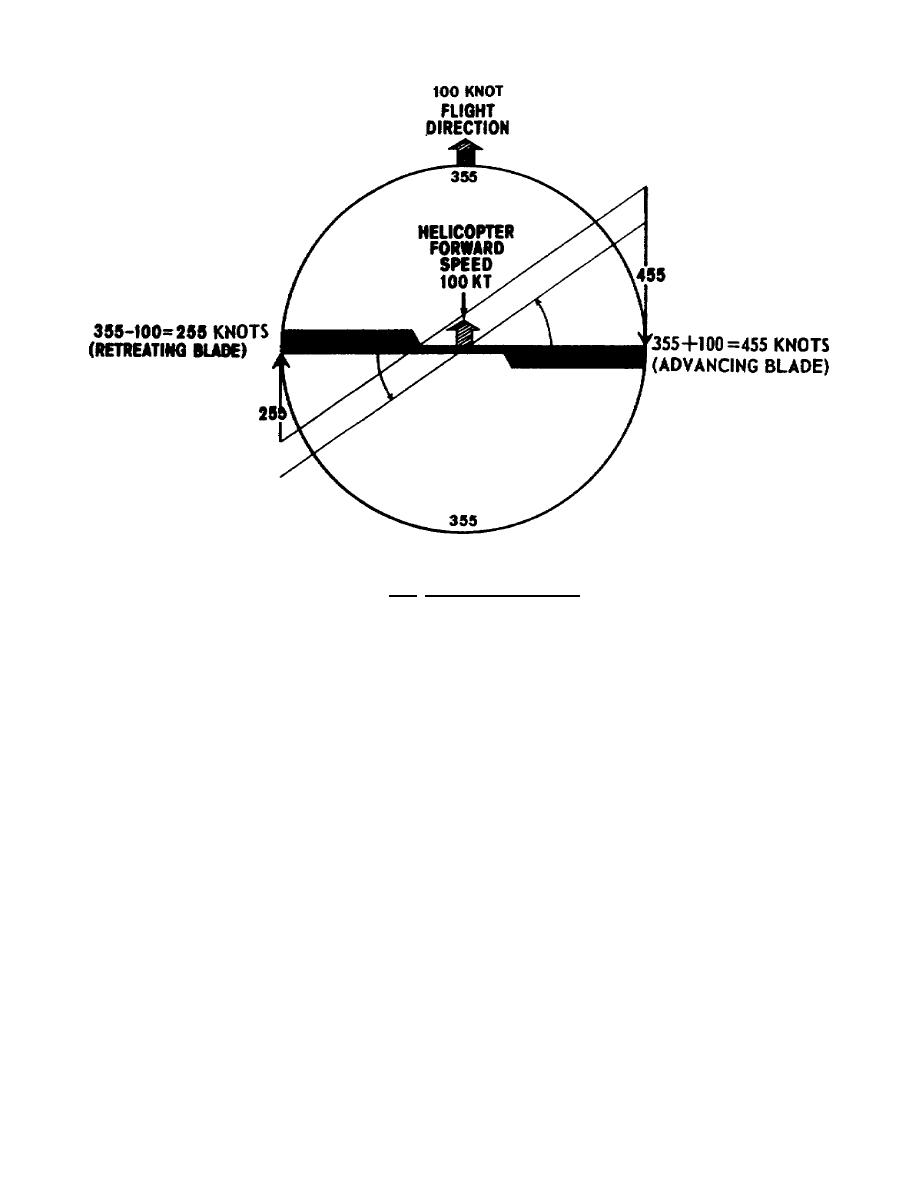
(ROTATIONAL VELOCITY) (HEL FORWARD SPEED) = (AIRSPEED OF BLADE)
Figure 3.7. Dissymmetry of Lift.
Cyclic pitch control, a design feature that permits changes in the angle of attack during each
revolution of the rotor, compensates for the dissymmetry of lift. As the forward speed of the helicopter
is increased, the aviator must apply more and more cyclic to hold a given rotor disc attitude. The
mechanical addition of more pitch to the retreating blade and less to the advancing blade is continued
throughout the helicopter's range.
3.9. RETREATING BLADE STALL
Figure 3.8 illustrates the tendency for the helicopter's retreating blade to stall in forward flight. It is a
major factor in limiting their forward speed. Just as the stall of an airplane wing limits the low-airspeed
possibilities of the airplane, the stall of a rotor blade limits the high-speed potential of a helicopter. The
airspeed of the retreating blade slows down as forward airspeed is increased. The retreating blade must
produce an amount of lift equal to that of the advancing blade, as shown in figure 3.8B. As the airspeed
of the retreating blade is decreased with forward airspeed, the blade angle of attack must be increased to
equalize lift throughout the rotor disc area. As this angle increase is continued, the blade will stall at
some high forward airspeed as shown in figure 3.8C.
25



 Previous Page
Previous Page
